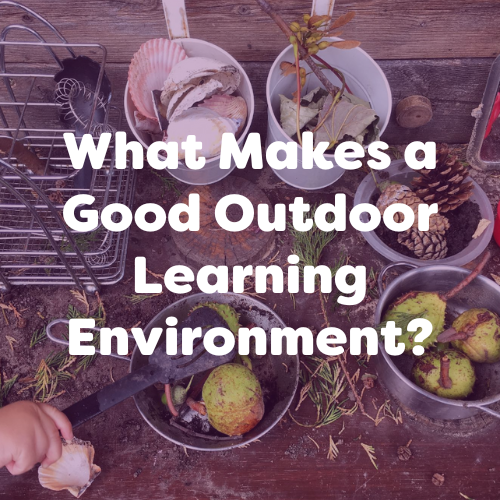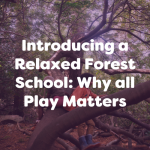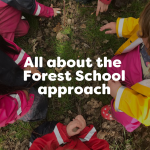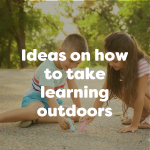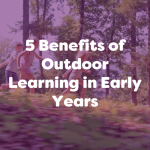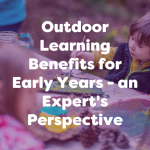This blog has been written by Samantha Aumonier, Level 3 Forest School Leader, EYR Brand Ambassador and advocate for outdoor learning and play. To learn more about Samantha, head over to her Instagram account @homeplayexplore. Here you will find a wealth of outdoor nature play activity ideas, games and book reviews. In this blog, Samantha will delve into all things outdoor with an emphasis on her passion, Forest School!

What is an Outdoor Learning Environment?
Outdoor learning is a broad notion that can mean many things to different people. It is essentially any outdoor environment that enables learning. This could be a woodland, local park, beach or natural space within an urban or rural setting.
In this blog, I’ll be talking about Forest School. This is a key outdoor learning environment for many children and young people who may or may not have regular access to a natural environment for play, learning and recreation. Forest School is a long-term process of frequent and regular sessions that take place in a natural or woodland environment. See the FSA (2011) Forest School Principles for an insight into the common concept of what Forest School is.
Why is an outdoor learning environment important?
- Outdoor learning spaces nurture a deep and meaningful connection between participants and the woodland environment. Connections made early on can inspire and encourage a life-long love of nature and the world we live in. This in turn can lead to sustainable living practices. Take care of nature and it will take care of you… and vice versa!
- Regular access to Forest School can provide a space for children to just be. As Louise Ambrose said, nature connection involves ‘all aspects of self; body, feelings, spirit and mind’.
- Forest School learning does not follow a particular set of rules, specific curriculum, target or objective. Children can spend time relaxing, playing or learning in an open space, not confined by walls. Their experiences can be built upon over time and with guidance and nurturing.

- The natural world is fascinating, ever-changing and evolving. Children can experience the weather, the changing seasons and make observations for hands-on (or body-on) learning!
- Children can experience play freely and naturally in an environment, not confined by walls.
- Forest School gives people ‘opportunities to achieve, develop confidence and self-esteem through hands-on learning experiences in a local woodland environment’. (FSA, 2022).
- Playing outdoors is fantastic for children’s health and wellbeing! There’s ample research to back this up. If you observe any children who have been attending Forest School regularly, you will see for yourself!
Resources to enhance your outdoor learning environment

Loose parts
Loose parts can include wooden blocks, pebbles and pinecones for child-centred play which allows children to get as creative as they want while supporting construction skills, numeracy and role-play.
Spark children’s imagination by exploring our huge range of outdoor loose parts featuring water channelling sets and crate bundles.
Looking for outdoor play inspiration? Read our blog: 15 Ways to Use Upcycled Crates in Outdoor Play
Books, ID charts and free downloads
Children may notice the flora and fauna around them and be intrigued by birds, mushrooms or even inspired to tell a story. Follow up on their interests and spark further learning by providing books on these topics for children to read and share with friends.
Explore the magical world of Minibeasts with our selection of FREE downloadable resources including a minibeast spotter, colouring sheets and much more.
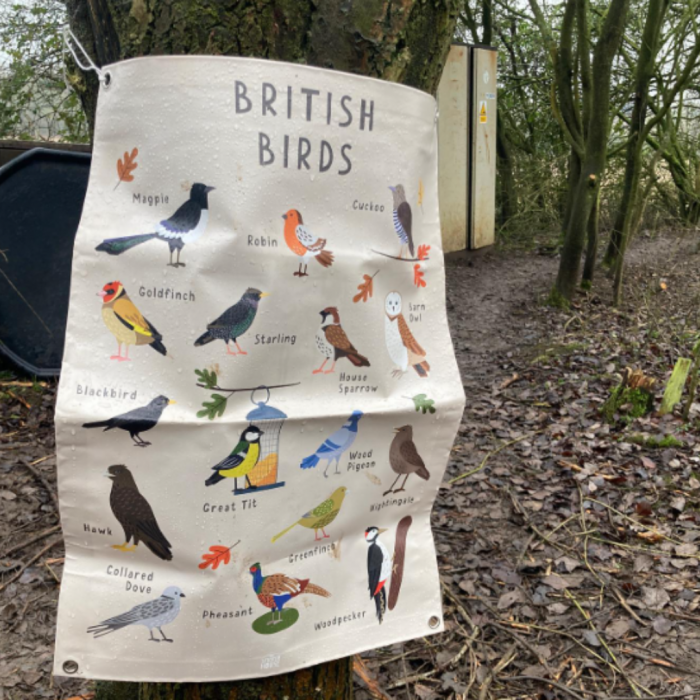
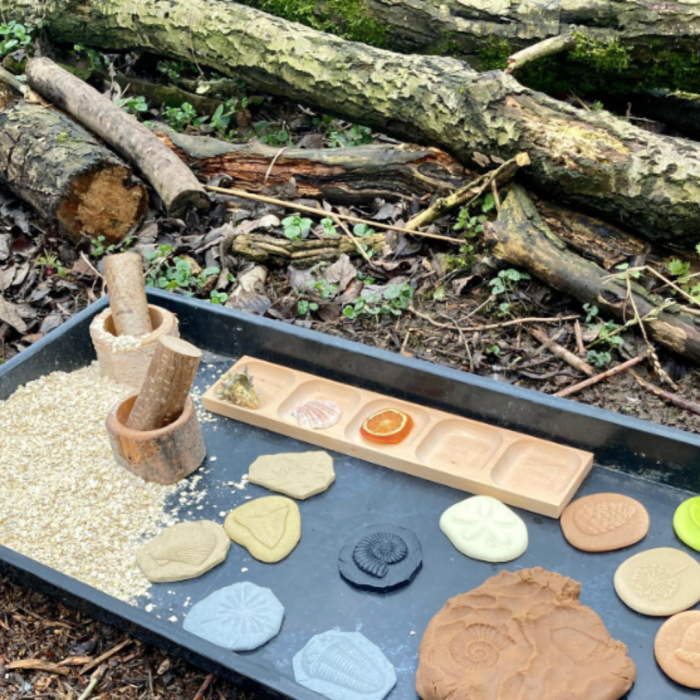
Clay
Open-ended creations can be made with clay from nature faces to little people to miniature world dens.
Press natural loose parts into the clay (such as leaves and twigs) to create patterns or use mark-making tools to experiment with pressure and rolling.
Try and get eco-friendly clay where possible! Our clay materials are available in warm terracotta and cool stone colour options to mould and create. Once finished, pack away or leave the clay to air dry before painting.
Den Building Kits
While logs, branches and other natural materials may be used to create all kinds of dens and shelters, not every natural environment has an ample supply of these building materials.
Top up on tarpaulins, pegs and ropes to save the day and help you create the perfect hideaway or shelter from the elements in all weather conditions.
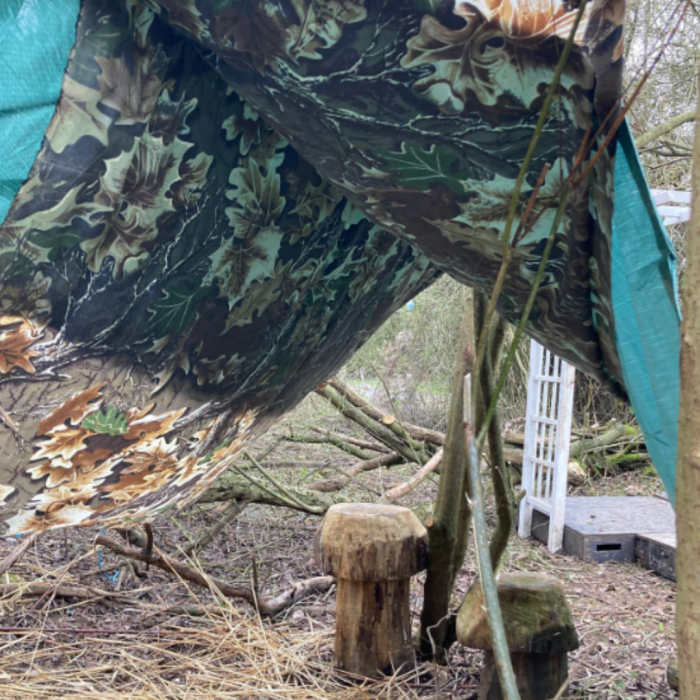
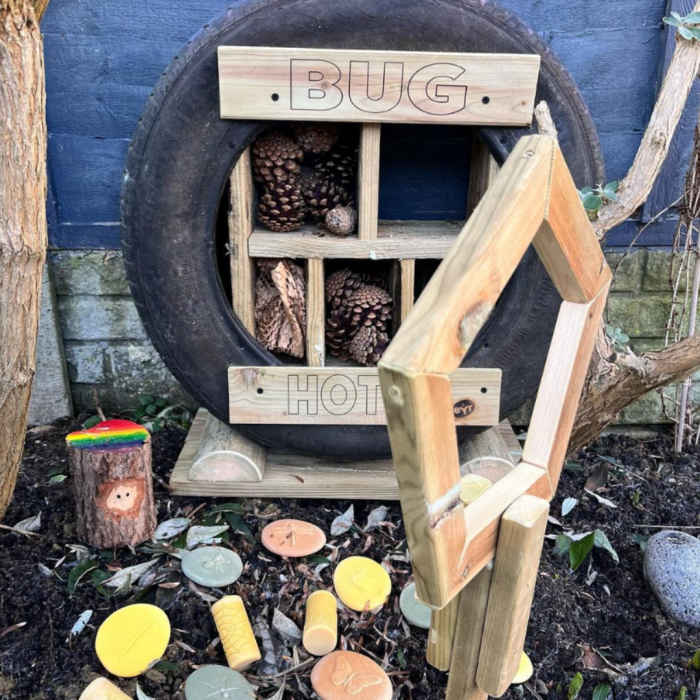
Minibeast hunt equipment
Equipment such as spades, buckets, magnifying glasses and brushes can be used for minibeast observations as well as for activities such as mud painting, inspecting flowers or leaves, mark making!
Looking for a complete minibeast hunting kit? Take a look at our bug-hunting kit. Perfect for outdoor learning in primary schools!
Fire and first-aid equipment
Equipment can include flint and steel, cotton wool, and petroleum jelly to light a small fire in your forest school. This can help build community and also foster companionship!
Experiment with campfire recipes, enjoy a story or song and cook up tasty treats while sharing knowledge of safe fire practice and other great survival skills as part of forest school education.
Remember to keep your first aid and burns kit stocked and easy to access in case of injury. These essential pieces of kit should be kept readily available on your Forest School premises at all times.
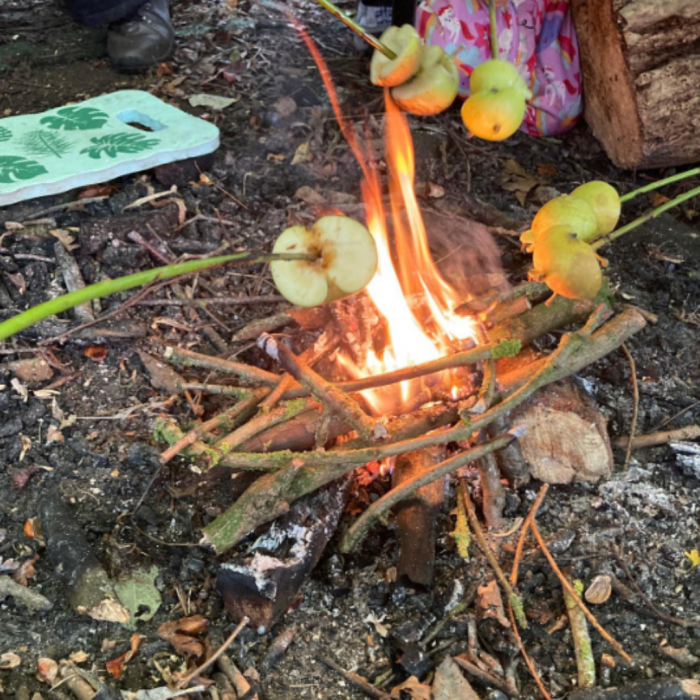
Answering Commonly Asked Questions about Outdoor Environments
1. What are some of the key benefits of outdoor play that young children can gain from spending time in an outdoor environment?
Fresh air, freedom and fun! There is space to be, to explore, to wonder and investigate, in our changing natural world.
2. How can early years educators incorporate outdoor learning into their curriculum?
It’s all about play and learning that is not constrained by a curriculum but follows the interests and needs of participants which in turn leads to learning and holistic development. Simply spending more time outdoors and letting children play with an element of risk-taking would be beneficial for all children who live in a world where there are less and less opportunities for independent play and exploration.
3. What are some essentials you couldn’t live without in your outdoor environment?
Campfire equipment, a hammock, a den and flora and fauna! But that’s just me! Undeniably, children are much more imaginative and may just love exploring the outdoors, navigating different terrains and weathers, the dens, tyre swings and mud kitchens!
4. Can you provide specific examples of how outdoor activities and nature-based learning experiences support children’s creativity and imagination?
You can give a child a specific nature craft idea such as making a nature wand and that can spark their imagination to make a stick person, a sword or a nature mobile! Open-ended resources such as natural materials plus string, tape and scissors or even tools can lead to much more imaginative creations being made than those the adult leaders come up with! This can in turn lead to many forms of play.

A bit about the author
My name is Samantha and I am a part-time working mummy of two. I studied Childhood, Education and Society at the University of Warwick, where my pursuit into the intriguing notion of Forest School began and since then I have completed my Level 3 Forest School Leader qualification. Presently, I work as a Leader at Nettle Hill’s Nature Explorers Forest School in Warwickshire and have an Instagram page, @homeplayexplore. where I share children’s play, nature and outdoor activity ideas, games and book reviews. Since being a little girl, I have always enjoyed playing and exploring in the wonderful outdoors and as an adult, my passion is all things Forest School!


